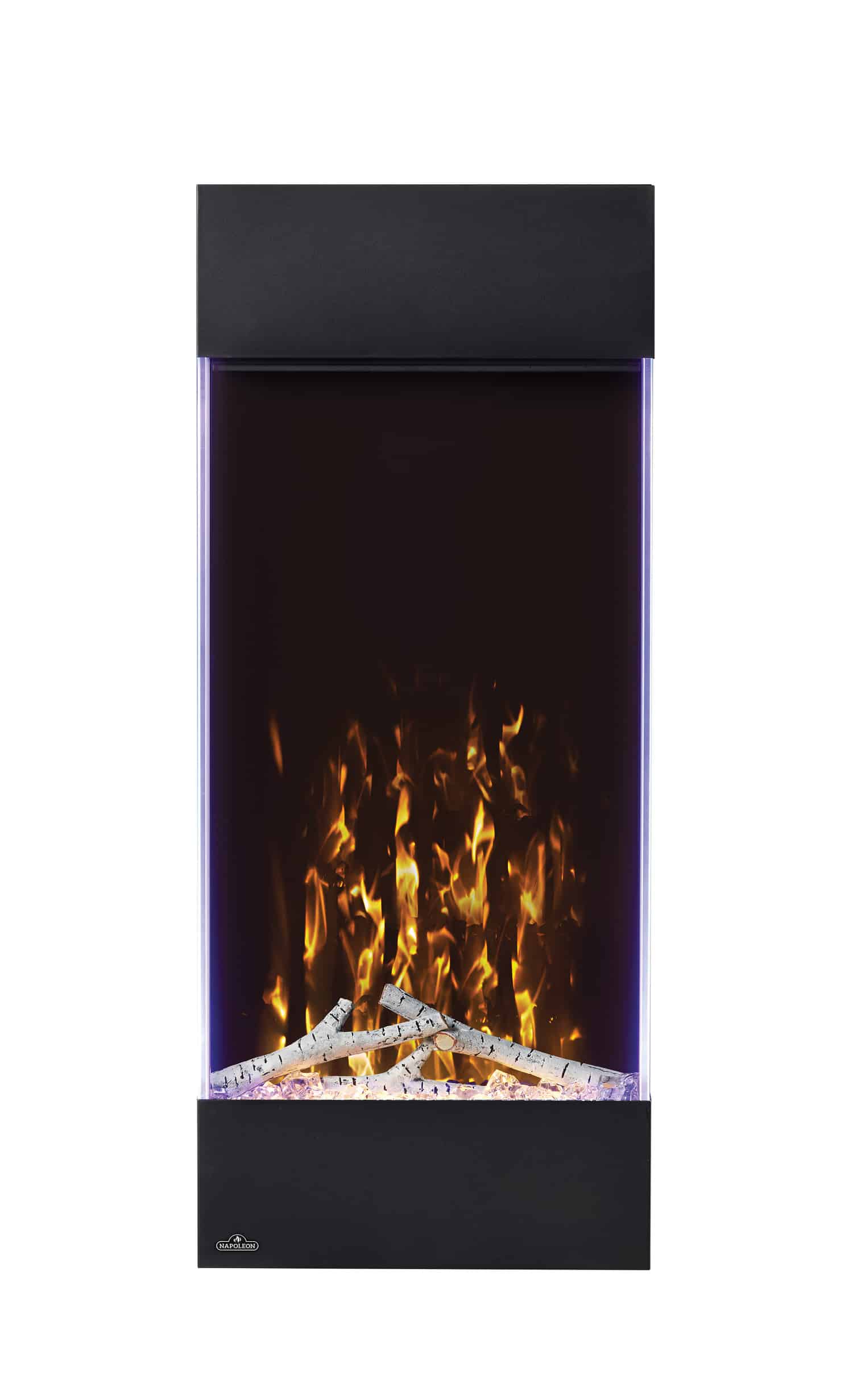When most people think of a fireplace, they imagine ambience and warmth. Ambience is right in any space, but the idea of overheating a small space is unappealing to most of us. For small spaces, one of the qualities that makes electric fireplaces superior to gas fireplaces is the lower heat output. In fact, with an electric fireplace, the flames are independent of the heaters, so you can have the flames with or without heat. This means that if you small space heats up quickly, you can turn off the heater while still enjoying the ambience of flickering flames. No more overheating!
There are differences between different fireplace models so we are often asked about the best electric fireplaces for small rooms. We have sorted the differences into three main categories, to help guide you to the perfect electric fireplace for your coziest spaces.
Heat output – 120 volts vs. 240 volts
All electric fireplaces will connect to a 120 volt electrical line. This is the standard current in your home. On 120 volts, the maximum heat output of an electric fireplace is 5000 BTUs, which may be equated to enough heat to take the chill off a space of 400 to 500 square feet. Of course, there are lower settings for smaller spaces, or warmer days. As already mentioned, you can have no heat at all if you prefer. We don’t consider a 400 to 500 square foot room to be small, but it is definitely too small a space to have a gas fireplace, where heat outputs range from 15,000 to 30,000 BTUs and up. If 5000 BTUs equates to 400 square feet, then 15,000 BTUs equates to 1200 square feet. That’s not a room, it’s a whole floor or a whole home in some cases.
There are some electric fireplace models that may connect to 240 volts, which allows a greater heat output, to a maximum of 9000 BTUs. Obviously, this could take the chill off a larger area, up to about 800 square feet. Again, we don’t consider this to be a small space, but by gas fireplace standards, it could be.
Zone Heating
An electric fireplace is meant as supplemental heating, to warm up a defined space that is already being served by another heat source, like a furnace. It is not meant as a primary heat source. We sometimes call it zone heating – heating up the space you actually use, while setting the furnace thermostat to a lower setting in other parts of the home. This saves energy costs. Zone heating is particularly useful in Spring and Fall, when the furnace may be turned off, but some rooms need a heat boost. Zone heating is also great for rooms that are always a bit cooler, like basements, or rooms that sit above the garage. While you can achieve zone heating with both gas and electric fireplaces, smaller rooms will overheat with a gas fireplace, while an electric fireplace may be perfect.
Scale of fireplace
Regardless of the size of the space to which you wish to add a fireplace, the scale is important. Going too small will not have the desired effect, and going to large could overwhelm the space. In our experience, it’s much more common for clients to go too small rather than too large. The fireplace should balance with the size of the room, as well as the size of the wall. As a general guideline, the fireplace should take up at least half the width of the wall, but not more than three-quarters the width. On an 8-foot wall, this would suggest a fireplace of between 48 and 72 inches. If you don’t feel you have enough space for this size on your wall, you may want to rearrange things in the room, to get a bit more space. Otherwise, you may end up with a fireplace that looks lost on your wall.
Fireplaces & TVs
If you are planning to have a TV above the fireplace, then you need to balance the size of the TV, as well as the size of the space. With electric fireplaces, we have complete flexibility on the size and position of the fireplace in relation to the TV. Unlike gas fireplaces, electric units don’t heat up the wall and there are no clearance issues that require the TV to be mounted high above. We suggest that the fireplace be as wide or wider than the TV, to achieve a balanced look on the wall. Think of the TV and fireplace combination as a pyramid. If the top of the pyramid is wider than the bottom, then the pyramid will look like it’s going to tip over. A wider bottom on the pyramid will appear more stable and pleasing.
TV’s are measured on the diagonal while fireplace widths are given in actual width across the glass. For this reason, the TV size may be larger than the fireplace size. Here is our general guide for TV size vs. minimum fireplace size:
42-inch TV = 42-inch fireplace
55-inch TV = 50-inch fireplace
65-inch TV = 60-inch fireplace
75-inch TV = 74-inch fireplace
You can always go wider with the fireplace, if your room allows, but try not to go smaller than the guide above.
Best Electric Fireplaces for Small Rooms
Here are some of our favourite electric fireplace models for small spaces.

SHOP NAPOLEON ALLURAVISION

SHOP AMANTII SYMMETRY XT

SHOP DIMPLEX REVILLUSION

SHOP NAPOLEON VERTICAL

SHOP AMANTII CUBE Stylish Fireplaces knows that adding a fireplace to your home can be challenging. With an electric fireplace and their NFI Certified Hearth Design Specialists, it’s easy to create a space you’ll love to share with family and friends. Check out all the options and connect with their experts for help to find the perfect electric fireplace for you. You’ll live stylishly ever after.